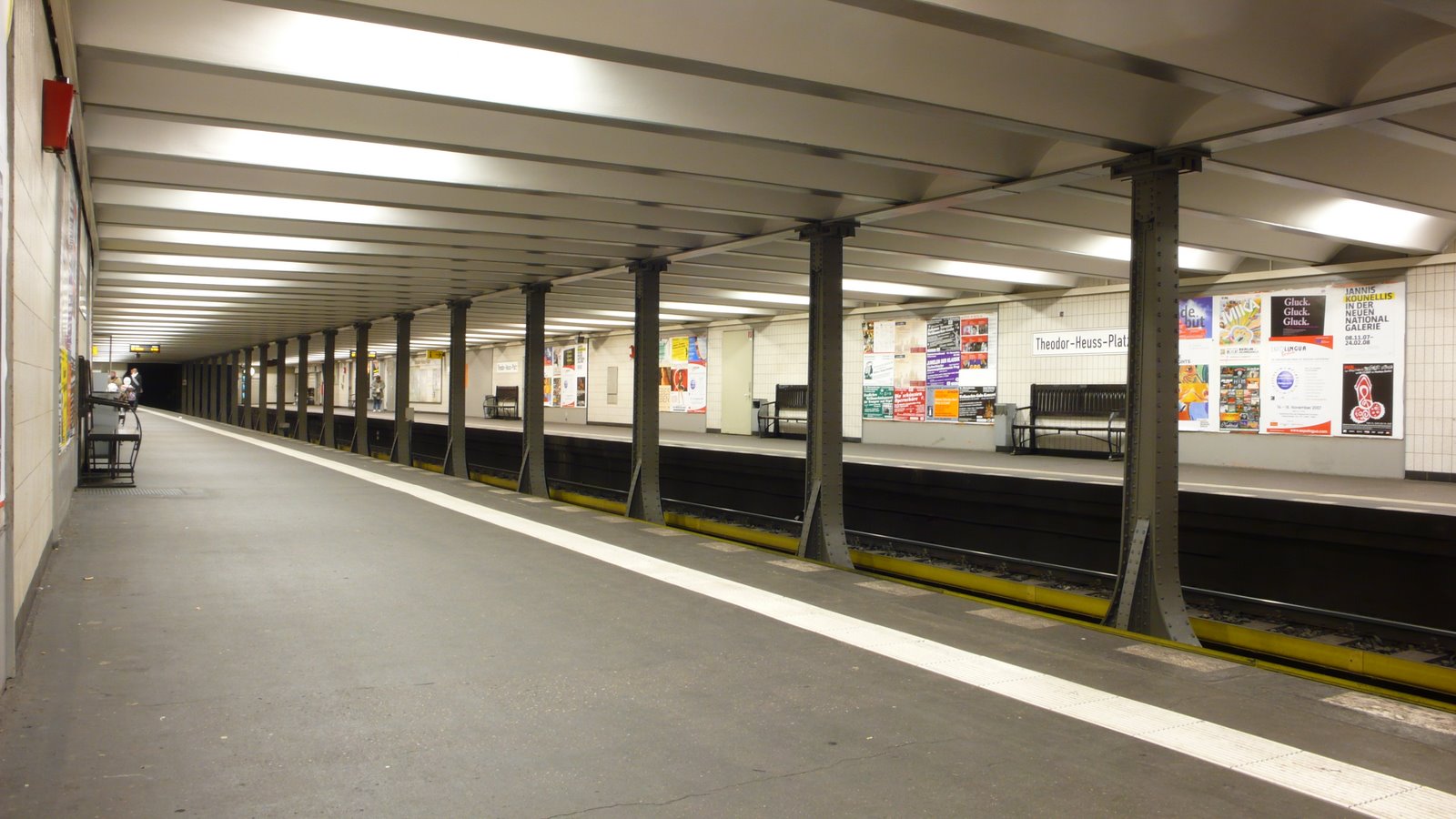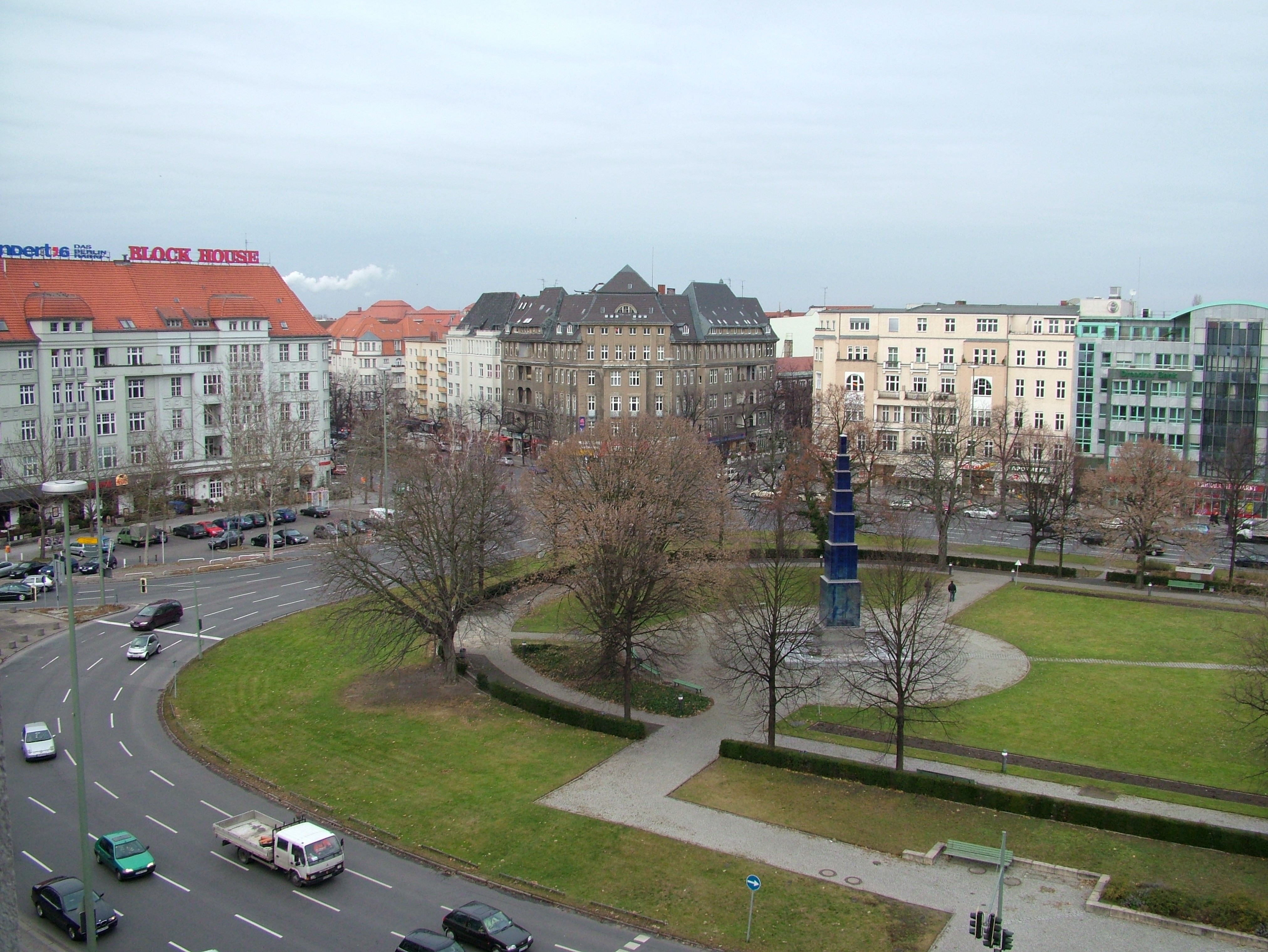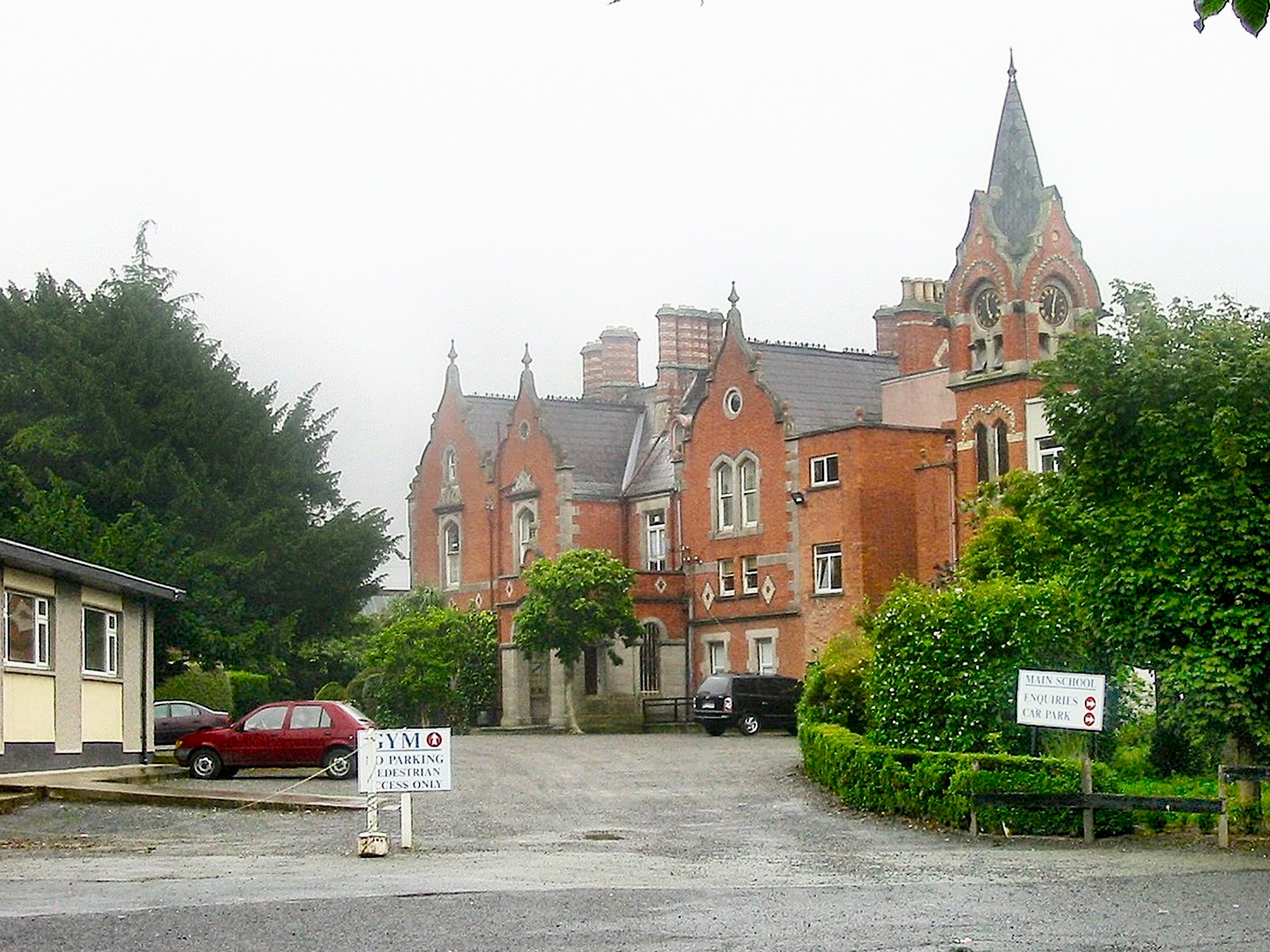|
Theodor-Heuss-Platz (Berlin U-Bahn)
Theodor-Heuss-Platz is a station on line U2 of the Berlin U-Bahn, located in the Westend district. Overview When the station first opened on 29 March 1908, it was named ''Reichskanzlerplatz'' after the eponymous square laid out between 1904 and 1908, referring to the office of Chancellor of Germany and its inaugural holder, Otto von Bismarck. It had been built according to the plans of Alfred Grenander in the course of the second western extension of the 1902 ''Stammstrecke'' route, which originally ran from Warschauer Brücke (now Warschauer Straße) to Knie (now Ernst-Reuter-Platz). At the same time, the Sophie-Charlotte-Platz and Kaiserdamm stations were opened. Two weeks before the opening, Emperor William II had the occasion of a first trip on the new line on 14 March 1908. ''Reichskanzlerplatz'' remained the western terminus until the Stadion (now Olympia-Stadion) station opened in 1913. In the course of the Nazi takeover, the square and the station were renamed ''Ado ... [...More Info...] [...Related Items...] OR: [Wikipedia] [Google] [Baidu] |
Theodor-Heuss-Platz
Theodor-Heuss-Platz (; colloquially called Theo by locals, ) is a large city square in the Westend district of Berlin, Germany. It is named after Theodor Heuss (1884–1963), the first President of Germany after World War II. Location The square is located at the western end of the wide Kaiserdamm boulevard, leading via Bismarckstraße, Straße des 17. Juni with the Berlin Victory Column and Brandenburg Gate in a direct line to Pariser Platz, Unter den Linden and the site of the City Palace in Berlin-Mitte. The axis is continued to the west by the Heerstraße up to Scholzplatz and further towards Spandau and the Berlin city limits. Underneath the square is the U-Bahn station Theodor-Heuss-Platz. History The square was laid out as part of the development of the new Westend district between 1904 and 1908 and then named ''Reichskanzlerplatz'' after the office of the Imperial Chancellor. When the eponymous U-Bahn station was inaugurated by Emperor Wilhelm II on 29 March 1908, t ... [...More Info...] [...Related Items...] OR: [Wikipedia] [Google] [Baidu] |
Kaiserdamm (Berlin U-Bahn)
Kaiserdamm is a Berlin U-Bahn station located on line U2. It is linked to the Messe Nord/ICC station of the Berlin S-Bahn. Opened in 1908, this station was built by A. Grenander. In 1936, it was renamed to Kaiserdamm/Messedamm; in 1967 it got the name Adenauerdamm (Messedamm). However, protests from the people living nearby led to another change to the former name (Adenauer — the chancellor of West Germany was not well liked in Berlin in these days).J. Meyer-Kronthaler: Berlins U-Bahnhöfe. be.bra Verlag (1996) See also *Messe Berlin *International Congress Centrum *Zentraler Omnibusbahnhof Berlin The Zentraler Omnibusbahnhof Berlin (short: ''ZOB Berlin'') is a central bus station located at the Funkturm Berlin in the Berlin district Westend of the Charlottenburg-Wilmersdorf district. It was initiated by Gustav Severin (founder of the Asso ... References External links U2 (Berlin U-Bahn) stations Buildings and structures in Charlottenburg-Wilmersdorf Railway sta ... [...More Info...] [...Related Items...] OR: [Wikipedia] [Google] [Baidu] |
Buildings And Structures In Charlottenburg-Wilmersdorf
A building, or edifice, is an enclosed structure with a roof and walls standing more or less permanently in one place, such as a house or factory (although there's also portable buildings). Buildings come in a variety of sizes, shapes, and functions, and have been adapted throughout history for a wide number of factors, from building materials available, to weather conditions, land prices, ground conditions, specific uses, prestige, and aesthetic reasons. To better understand the term ''building'' compare the list of nonbuilding structures. Buildings serve several societal needs – primarily as shelter from weather, security, living space, privacy, to store belongings, and to comfortably live and work. A building as a shelter represents a physical division of the human habitat (a place of comfort and safety) and the ''outside'' (a place that at times may be harsh and harmful). Ever since the first cave paintings, buildings have also become objects or canvasses of much artistic ... [...More Info...] [...Related Items...] OR: [Wikipedia] [Google] [Baidu] |
U2 (Berlin U-Bahn) Stations
U2 are an Irish rock band from Dublin, formed in 1976. The group consists of Bono (lead vocals and rhythm guitar), the Edge (lead guitar, keyboards, and backing vocals), Adam Clayton (bass guitar), and Larry Mullen Jr. (drums and percussion). Initially rooted in post-punk, U2's musical style has evolved throughout their career, yet has maintained an anthemic quality built on Bono's expressive vocals and the Edge's chiming, effects-based guitar sounds. Bono's lyrics, often embellished with spiritual imagery, focus on personal and sociopolitical themes. Popular for their live performances, the group have staged several ambitious and elaborate tours over their career. The band was formed when the members were teenaged pupils of Mount Temple Comprehensive School and had limited musical proficiency. Within four years, they signed with Island Records and released their debut album, ''Boy'' (1980). Works such as their first UK number-one album, ''War'' (1983), and the singles "Sunda ... [...More Info...] [...Related Items...] OR: [Wikipedia] [Google] [Baidu] |
Messe Berlin
Messe Berlin (') are exhibition grounds in the Charlottenburg-Wilmersdorf precinct of Berlin, Germany, at Masurenallee opposite the Haus des Rundfunks. Since 2011, they have officially been known as "Berlin ExpoCenter City" and operated by the Messe Berlin GmbH company. Overview The premises, built in 1936–37, comprise twenty-six halls covering including Funkturm Berlin. The halls are connected via a bridge to the Internationales Congress Centrum Berlin, which closed in 2014 until further notice. To the south is the CityCube Berlin, an exhibition and conference hall that opened in 2014, built on the lands of the former Deutschlandhalle arena, which has replaced the functions of the ICC. Important trade fairs held here include Internationale Grüne Woche Berlin (Green Week), Internationale Funkausstellung Berlin (IFA), Internationale Tourismus-Börse (ITB), Youth fair YOU, Venus Berlin The Venus Award is a film award in the adult film industry presented yearly in Berli ... [...More Info...] [...Related Items...] OR: [Wikipedia] [Google] [Baidu] |
Haus Des Rundfunks
The Haus des Rundfunks ("Broadcasting House"), located in the Westend district of Berlin, the capital city of Germany, is the world's oldest self-contained broadcasting centre. Designed by Hans Poelzig in 1929 after he won an architectural competition, the building contains three large centrally located broadcasting spaces, which are shielded from street noise by the surrounding office wings. It is used today by local ARD broadcaster Rundfunk Berlin-Brandenburg (RBB) to make programmes carried by its ''Inforadio'', ''Kulturradio'', and ''Radio Berlin 88,8'' channels. The building's large broadcasting spaces are occasionally also used to host concerts. History The building, the ground plan of which is a triangle with two curved sides and a 150-metre-long straight façade clad with ceramic tiles, was constructed between 1929 and 1930 and inaugurated on 22 January 1931 as the seat of the ''Reichs-Rundfunk-Gesellschaft''. The large, central broadcasting space was finished in 1933. On ... [...More Info...] [...Related Items...] OR: [Wikipedia] [Google] [Baidu] |
Kadyny
Kadyny (german: Cadinen) is a village of Gmina Tolkmicko, within Elbląg County, Warmian-Masurian Voivodeship, in northern Poland. Geography It is situated in the Elbląg Upland Landscape Park, a protected area on a terminal moraine stretching along the Vistula Lagoon of the Baltic Coast. The Bażyński Oak in the village is one of the oldest trees in Poland. Kadyny lies approximately south-west of Tolkmicko, north of Elbląg, and north-west of the regional capital Olsztyn. It shares a border with the village of Łęcze to the south. The village has an approximate population of 600. Kadyny Station is a stop on the former Vistula Lagoon railway line (''Kolej Nadzalewowa'') from Elbląg to Braniewo, which is to be re-activated by the private Arriva RP rail carrier. The settlements Kikoły and Ostrogóra are both considered part of Kadyny. History In the 11th-13th century a Baltic Prussian stronghold was located at the Klasztorna Góra ("Monastery Hill"). The ''terra Cadi ... [...More Info...] [...Related Items...] OR: [Wikipedia] [Google] [Baidu] |
Maiolica
Maiolica is tin-glazed pottery decorated in colours on a white background. Italian maiolica dating from the Renaissance period is the most renowned. When depicting historical and mythical scenes, these works were known as ''istoriato'' wares ("painted with stories"). By the late 15th century, multiple locations,L. Arnoux, 1877, British Manufacturing Industries – Pottery "Most of the Italian towns had their manufactory, each of them possessing a style of its own. Beginning at Caffagiolo and Deruta, they extended rapidly to Gubbio, Ferrara, and Ravenna, to be continued to Casteldurante, Rimini, Urbino, Florence, Venice, and many other places." mainly in northern and central Italy, were producing sophisticated pieces for a luxury market in Italy and beyond. In France maiolica developed as faience, in the Netherlands and England as delftware, and in Spain as talavera. In English the spelling was anglicised to ''majolica'' but the pronunciation usually preserved the vowel with an ... [...More Info...] [...Related Items...] OR: [Wikipedia] [Google] [Baidu] |
Theodor Heuss
Theodor Heuss (; 31 January 1884 – 12 December 1963) was a German liberal politician who served as the first president of West Germany from 1949 to 1959. His cordial nature – something of a contrast to the stern character of chancellor Konrad Adenauer – largely contributed to the stabilization of democracy in West Germany during the ''Wirtschaftswunder'' years. Before beginning his career as a politician, Heuss had been a political journalist. Early life and education Heuss was born in Brackenheim, a small town and wine-making community near Heilbronn in Württemberg, on the border between the historic regions of Swabia and Franconia. He attended the Karlsgymnasium in Heilbronn, from which he graduated in 1902. This selective secondary school has since been renamed the Theodor-Heuss-Gymnasium, in honor of its famous alumnus. Heuss studied economics, art history and political science at the universities of Munich and Berlin. He received his doctorate at Munich, wit ... [...More Info...] [...Related Items...] OR: [Wikipedia] [Google] [Baidu] |
Adolf Hitler
Adolf Hitler (; 20 April 188930 April 1945) was an Austrian-born German politician who was dictator of Nazi Germany, Germany from 1933 until Death of Adolf Hitler, his death in 1945. Adolf Hitler's rise to power, He rose to power as the leader of the Nazi Party, becoming the Chancellor of Germany, chancellor in 1933 and then taking the title of in 1934. During his dictatorship, he initiated European theatre of World War II, World War II in Europe by invasion of Poland, invading Poland on 1 September 1939. He was closely involved in military operations throughout the war and was central to the perpetration of the Holocaust: the genocide of Holocaust victims, about six million Jews and millions of other victims. Hitler was born in Braunau am Inn in Austria-Hungary and was raised near Linz. He lived in Vienna later in the first decade of the 1900s and moved to Germany in 1913. He was decorated during his Military career of Adolf Hitler, service in the German Army in Worl ... [...More Info...] [...Related Items...] OR: [Wikipedia] [Google] [Baidu] |
Machtergreifung
Adolf Hitler's rise to power began in the newly established Weimar Republic in September 1919 when Hitler joined the '' Deutsche Arbeiterpartei'' (DAP; German Workers' Party). He rose to a place of prominence in the early years of the party. Being one of its best speakers, he was made the party leader after he threatened to otherwise leave. In 1920, the DAP renamed itself to the ''Nationalsozialistische Deutsche Arbeiterpartei'' – NSDAP (National Socialist German Workers' Party, commonly known as the Nazi Party). Hitler chose this name to win over German workers. Despite the NSDAP being a right-wing party, it had many anti-capitalist and anti-bourgeois elements. Hitler later initiated a purge of these elements and reaffirmed the Nazi Party's pro-business stance. By 1922 Hitler's control over the party was unchallenged. In 1923, Hitler and his supporters attempted a coup to remove the government via force. This seminal event was later called the Beer Hall Putsch. Upon its fai ... [...More Info...] [...Related Items...] OR: [Wikipedia] [Google] [Baidu] |
Olympia-Stadion (Berlin U-Bahn)
Olympia-Stadion is a Berlin U-Bahn station on line U2, in the Westend district. It serves Berlin's Olympic Stadium, where football matches and other events are regularly held. The station is located around from the similarly named S-Bahn station, Olympiastadion, whose name – without hyphen – more closely reflects that of the Olympic Stadium. History The ''Stadion'' station was opened on 8 June 1913, together with the ''Deutsches Stadion'', the predecessor of the Olympic Stadium. Due to World War I, the 1916 Summer Olympics, for which the building of the stadium was intended, were cancelled and regular train service at the ''Stadion'' station was not available until 1922. Subsequent to Berlin's successful application for the 1936 Summer Olympics, the renowned U-Bahn architect Alfred Grenander redesigned the building and the station was named ''Reichssportfeld''. On 15 February 1944, it was directly hit by the air raids. From 1950 on, the station was called ''Olympia-S ... [...More Info...] [...Related Items...] OR: [Wikipedia] [Google] [Baidu] |









